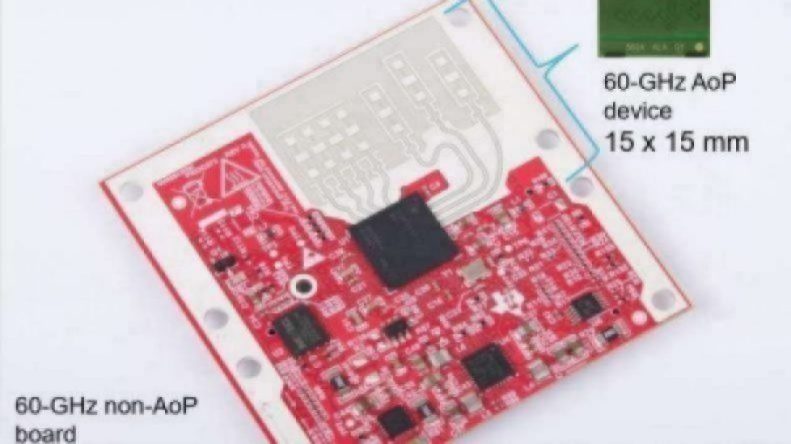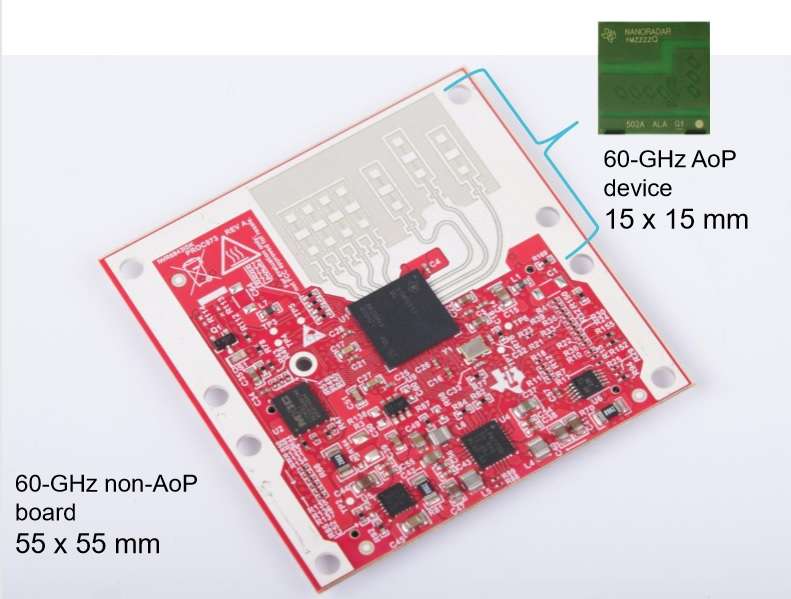TI Joins 60 GHz Industrial mmWave Camp
Article By : Junko Yoshida, EE Times

North American regulatory limitations on 77 GHz options results in a move to 60 GHz
MADISON, Wis. — By re-spinning the company’s 76- to 81-GHz sensors originally designed for automotive applications, Texas Instruments made clear this week its intentions to muscle into the industrial market with a 60-GHz mmWave sensor family.
Sameer Wasson, general manager of radar and analytic processors at TI, told us, “There have been very good development activities in certain regions of the world where system vendors are rapidly embracing 77-GHz mmWave sensors and putting out their production systems.”
However, in other regions, most notably North America, the story is different.
Although there are customers evaluating the product, “what they could do with the 77-GHz sensors are somewhat limited,” said Wasson. The Federal Communications Commission (FCC) has “a strong view” about the 76-GHz to 81-GHz frequency, he said, because “the agency is limiting its use only to automotive applications.” The FCC, apparently, doesn’t want to see automobiles getting interference from non-automotive systems, he added.

Future use of the 24GHz wideband and UWB band vehicular radars will not be available after 2021, both in Europe and the U.S.; only the narrowband ISM band will be available long term. This lack of wide bandwidth in the 24GHz band, coupled with the need for higher performance in emerging radar applications, makes 24GHz unattractive for new radar implementations. (Source: Texas Instruments)
This reality led TI to take the same mmWave technology and offer “a unique form of sensing modality” to non-automotive systems by using 60 GHz.
Certainly, the automotive market is a big, immediate market for TI’s single-chip CMOS radar chips, which were described as “disruptive” and “have been very well-received,” said Wasson. Acknowledging that TI is starting see revenue from the radar chips in the automotive market, he stressed, “What I am really excited about is how wide and diverse this market [for radar chips] is.”
He said, “It’s diverse in terms of the market itself. But it is also very diverse in terms of problems we are solving for end systems.”
Radar chips go into not just bumpers and inside automobiles. They go into buildings, robotics, and automation systems on factory floors, where high-resolution radar can detect objects, people, and motion with high precision.
60 GHz: ‘a natural choice’
Wasson called 60 GHz “a natural choice” for a few reasons. First, it lends itself to a much smaller antenna. Its antenna is slightly bigger than the one used in 77-GHz mmWave sensors, but “it is still much much smaller than an antenna needed by 24-GHz sensors,” he explained.
Second, 60 GHz also accommodates a wider bandwidth range. Wasson reminded, “In our technology, the wider the bandwidth, the more resolution we get. So in 77-GHz radar, we have 5-GHz bandwidth. With 60 GHz, we now have 7 GHz (bandwidth) available.”
In short, the choice of 60 GHz allows TI to produce a much higher-resolution radar. With 60 GHz, TI could offer in the future “arguably higher resolution than 77-GHz radar chips,” said Wasson.
TI, however, chose 4 GHz over 7-GHz bandwidth in the company’s new industrial 60-GHz mmWave sensors. This is because 4 GHz meets the market need right now, he said. “This was a choice we made in our product definition.”
TI’s high-resolution industrial sensors — with 4 GHz of ultra-wide bandwidth — translate into an ability to detect “objects and motion up to 20 times more accurately than 24-GHz narrowband solutions,” explained the company.
Autonomy riding on sensors
Just as single-chip, highly integrated 77-GHz mmWave sensors have opened the door for TI into automotive, Wasson said, “We are determined to truly monetize its single-chip aspect of the 60-GHz sensors for the industrial market.” With a DSP integrated into the CMOS mmWave radar chip, TI is pitching the “autonomy” of the new industrial radar chip, he added. “There is no need for a separate processor and there is no need for bigger bill of materials” to enable sensors to have intelligence.
TI’s new industrial sensors integrate “accurate sensing with real-time decision making and processing on a single chip” while it can distinguish human motion from mechanical motion, reducing false positives, according to the company.
“We’ve spent a lot of time solving the system aspect of industrial applications — for robots, factory, and building automation,” explained Wasson. The new chips come with functional safety SIL 2, according to Wasson. It is designed to address such issues as “latency, safety, and security.” Especially when collaborative robots start interacting with humans on factory floors, for example, safety becomes paramount, he added.
Antenna-on-package
One last big effort for Wasson’s team was how to reduce the barrier to adopting the RF technology, he noted. “While there is a lot of interest in using our 60-GHz mmWave radars among our customer base, RF design isn’t something they are too comfortable with doing on their own.”
So TI went ahead and invested in the development of antenna-on-package (AoP) design, said Wasson. AoP reduces the complexities of radio frequency design and simplifies the manufacturing process.

Antenna-on-package (AoP) reduces complexities of RF design. (Source: TI)
AoP represents “meaningful savings of system space and cost — 75% smaller than 24 GHz,” according to TI. The size of AoP — based on TI’s home-grown technology — is 15 x 15 mm.
TI’s 60-GHz radar chip, along with a variety of power chips, is currently sitting on 55 x 55-mm non-AoP board. TI’s goal is to drastically reduce the size of this entire board in the future.
Samples of TI’s 60-GHz industrial radar chips are now available only through the TI store. Its modular development platform is available at $348, and additional antenna modules are $149, according to TI.